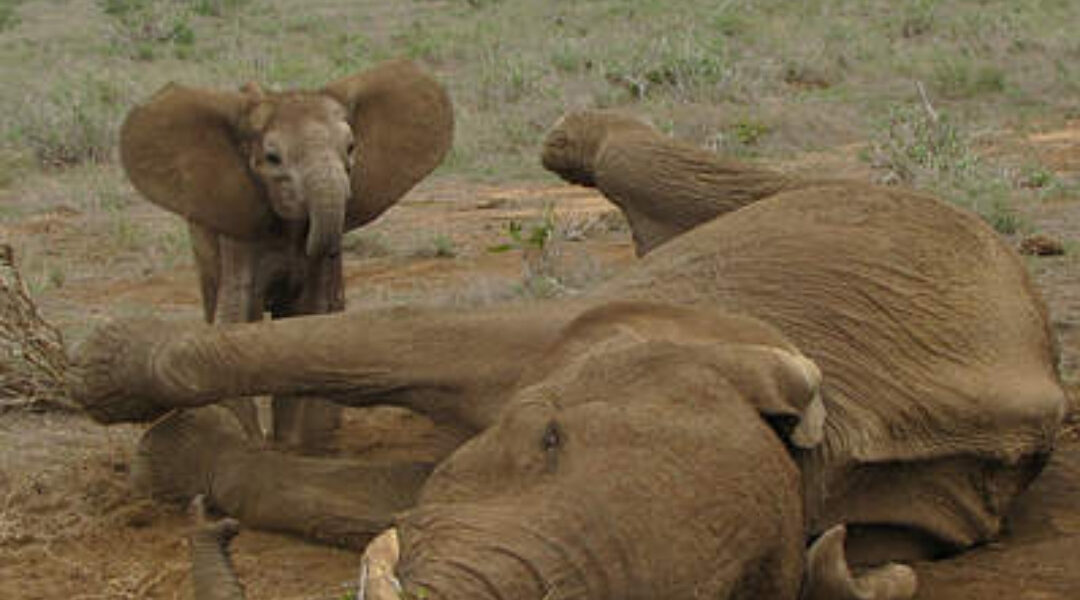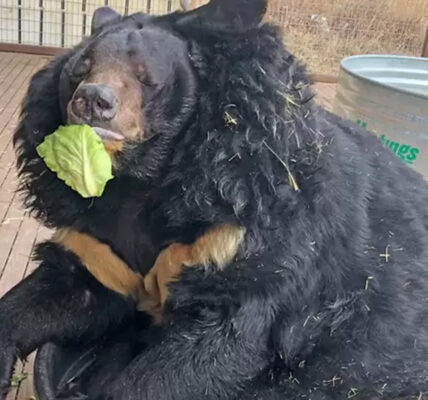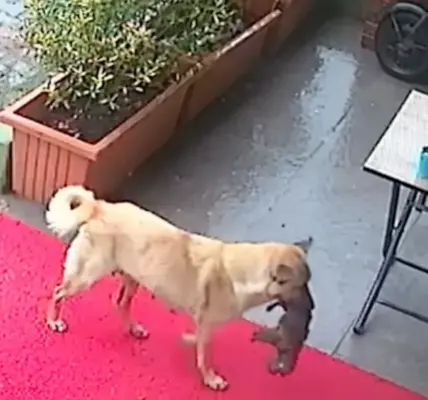Under the searing African sun, near Mukwaju beyond Satao, a desperate cry broke the silence of the plains. Rangers from the Kenya Wildlife Service (KWS) responded swiftly, racing toward a distress call that would test the limits of courage, compassion, and time.

When they arrived, they found a heartbreaking sight — a massive elephant cow lying helplessly on her side, too weak to stand. Her tiny calf stood beside her, confused and frightened, nudging her trunk as if trying to wake her. Around them, members of the herd lingered, restless and uneasy, aware that something was terribly wrong.
The scene told its own story. The long months of drought had drained the land of life — rivers dried to dust, grass turned brittle, and the once-lush plains became a landscape of thirst. For this mother elephant, the struggle had simply been too much. Her body was frail, her breathing labored, her eyes dim with exhaustion.
But beside her stood a reason to keep fighting — her baby.
The KWS team, joined by veterinarians and conservation officers, faced an agonizing decision. The mother could barely move. Her calf was hungry and growing weaker by the hour. To save the baby, they would have to separate it from the mother — a choice no one made lightly.

As the rescue began, the team worked carefully, knowing the herd could react unpredictably. Using calm, deliberate movements, they secured the calf and lifted it gently into a transport vehicle. The little elephant cried out, its small trunk reaching toward the fallen figure of its mother. Every sound pierced the hearts of those watching.
Meanwhile, efforts turned to the mother. With ropes attached to her tusks and a vehicle positioned for leverage, the rescuers began the delicate task of helping her rise. Inch by inch, they pulled. Dust swirled around them. The air filled with the sound of straining engines and shouted directions.
Then, finally — she moved.
With one mighty push, the elephant shifted her weight, rolled to a sitting position, and, after several long moments, stood. Cheers erupted. Her ears flapped weakly, and she turned her head as if searching for the calf that had been her whole world.

In a rare and extraordinary moment, mother and calf were briefly reunited. She extended her trunk, touching her baby’s face one last time before the team made the painful but necessary decision to transport the calf to safety.
The young one was airlifted to the David Sheldrick Wildlife Trust (DSWT) Nairobi orphanage, where specialized caretakers were waiting. There, it would receive nourishment, medical care, and something just as vital — affection. It would grow up among other rescued calves, slowly learning to trust again, to heal, and one day, to return to the wild.
As for the mother, her recovery was uncertain. Preliminary assessments pointed to severe malnutrition brought on by drought, a harsh reminder of the toll climate change and resource scarcity take on wildlife across Africa. Yet, thanks to the intervention, she was able to stand, regain strength, and walk away with her herd — a small miracle in a land that has seen too many tragedies.
The rescue was more than a story of survival. It was a portrait of the quiet heroism that unfolds far from the spotlight — of rangers who don’t clock out when the sun sets, of veterinarians who treat every life like it matters beyond measure, of people who refuse to look away when nature struggles.
For the calf, the road ahead will be long. At the orphanage, it will grow under the gentle guidance of caretakers who act as surrogate mothers, feeding it milk every three hours, comforting it through restless nights, and eventually teaching it how to forage and live freely once again.

For the rescuers, the day’s success was bittersweet. They had saved a life — but they had also witnessed the suffering of a mother who could not do the one thing she wanted most: feed her child.
In the fading light, as the convoy drove away with the calf safely aboard, one ranger looked back at the horizon — the silhouette of the mother elephant still visible, standing tall now, framed by the orange glow of dusk.
“She fought,” he whispered. “Even when she couldn’t move, she fought.”

The rescue near Mukwaju was not just a response to a crisis. It was a reminder — that every life in the wild is connected to our choices, that droughts are not just weather but consequence, and that compassion, even in its smallest act, can ripple outward like the beating of wings or the steps of a young elephant learning to walk again.
At DSWT Nairobi, the baby elephant is now safe, loved, and growing stronger each day. And though it may never again see the mother who gave everything to keep it alive, her spirit lives on — in the calf’s resilience, in the hands that saved it, and in the hope that kindness will always find its way, even through the dust of drought.
Because in the heart of every rescue lies something deeper than survival — it’s love, refusing to give up.




